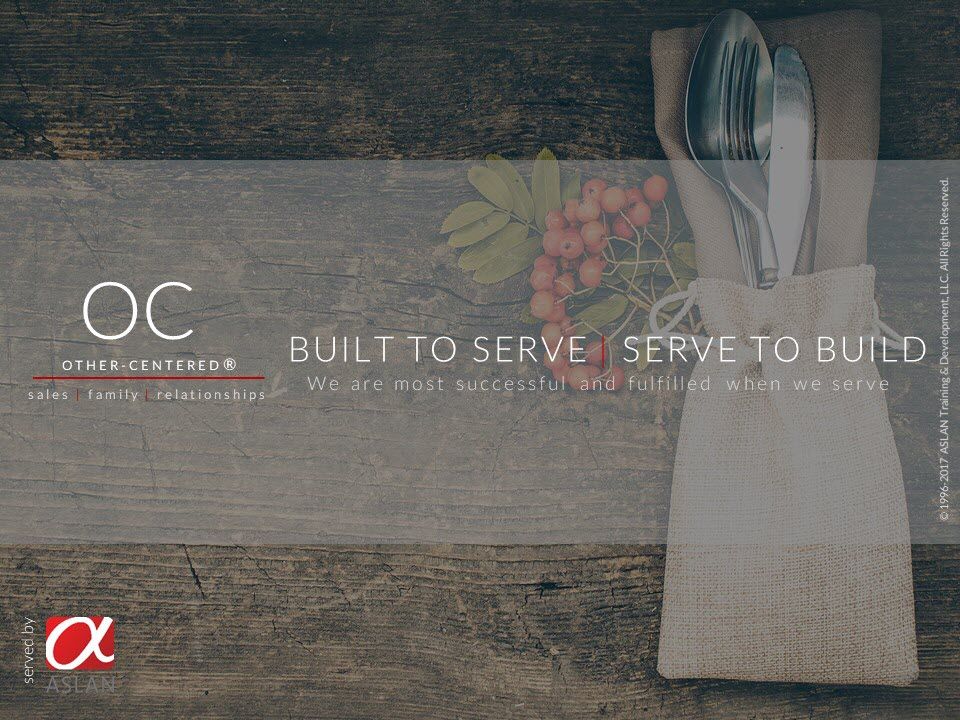Moving From a ‘Me’ to an ‘Other-Centered’ Universe
- By Connection Model Team
- •
- 29 Aug, 2017
- •
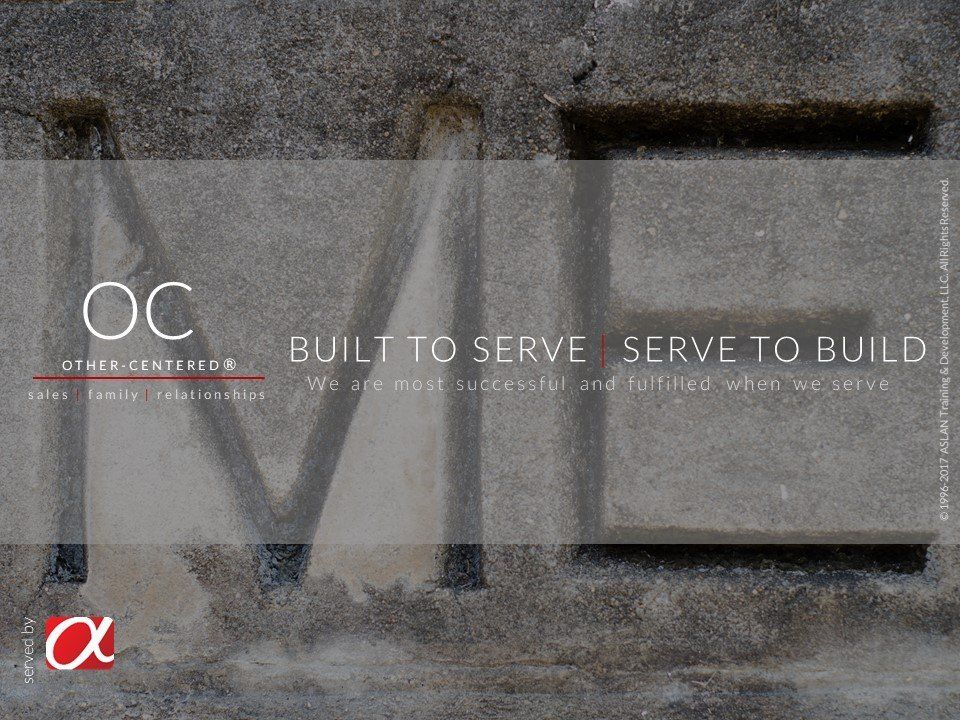
The earth does not revolve around the sun. It revolves around you and has been doing so for decades. At least, this is the model you are using.
You live in a “me-centered” world in which you interpret everything that happens in terms of “What is its impact on me.” Your spouse gets a great job offer and you wonder what effect this will have on your relationship. Your daughter drops out of high school to begin an in-depth exploration of controlled substances and you wonder what your friends will think about your parenting. Your boss leaves the company and you wonder whether you will be promoted or what your relations will be with the next person to take that position.
You are constantly preoccupied with “me” and what you like and what others think of you and why things aren’t going your way. It reminds me of the joke about the gorgeous girl who spoke about herself endlessly and then tried to make amends “But enough about me. Lets talk about you. Tell me what you like about me.”
Do you think I am exaggerating? That this is certainly not true of you because you are a concerned citizen and care about the environment and poverty and have actually campaigned against land mines? Oh, Yes, Victoria. This is true of YOU, yes you!
Think back on the last few conversations you had with a good friend. Did you sometimes lose thread of what your friend...
Read the entire original article here: http://m.huffpost.com/us/entry/570730
Other-Centered® Blog
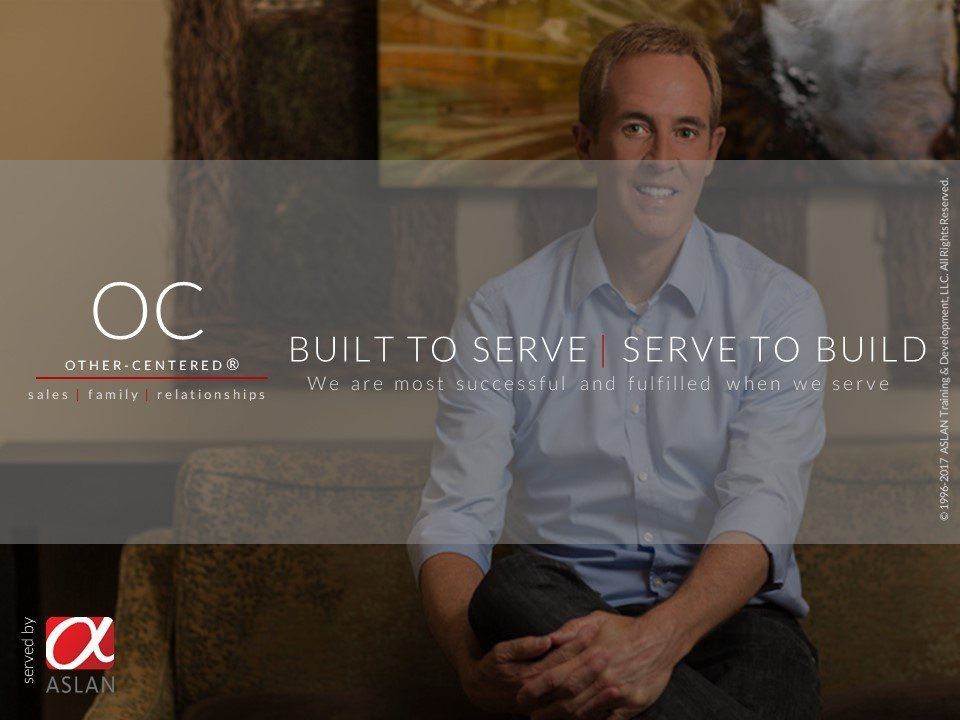
You can catch all of Andy's great messages here: Andy Stanley Leadership Podcast
To follow and learn more about Andy Stanley visit AndyStanley.com
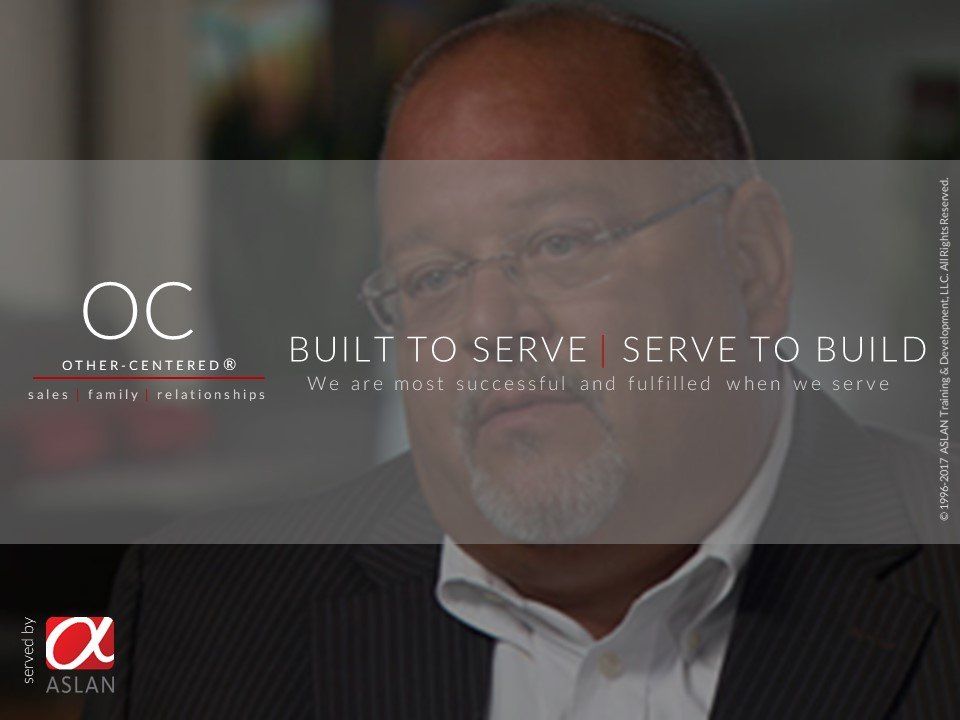
Jobs guru Joe Max Higgins went to extreme lengths to convince a Japanese tire company to bring a plant—and 2,000 jobs—to his rural Mississippi county.
Joe Max Higgins is in the business of creating jobs and will apparently stop at nothing to see the folks of his region employed. This week on 60 Minutes, correspondent Bill Whitaker speaks with Higgins about what exactly that task entails.
Higgins runs economic development for Mississippi’s Golden Triangle, a region in the eastern part of the state. The triangle is formed by the cities of Columbus, Starkville, and West Point and their counties, and it has seen something of a boom in industry in the last decade. Higgins has brought in about 6,000 jobs to the area since 2003, which amounts to about half the manufacturing jobs the region has lost in the last 25 years.
Joe Max Higgins
CBS NEWS
Those gains are significant, considering advanced manufacturing techniques now require a smaller, more highly trained workforce. For example, Steel Dynamics, one of the most high-tech steel mills in the country, now operates in the Triangle. The company requires only 650 employees to produce more than 3 million tons of steel a year; in decades past, it would have needed 4,000.
In this modern landscape, Higgins says wooing a Japanese company to the region was “the Holy Grail” – and that’s exactly what he did when he landed a deal with Yokohama Tire.
“If you can land a Japanese project, that is a testament to the amount of work that you can do, the product you can produce, and the level of expertise of your team because they’re extremely competitive, and they’re hard to win,” Higgins says.
To win the Yokohama tire plant, the Golden Triangle competed in a nationwide search that evaluated 3,100 counties across the U.S. It was Higgins’ job to prove to Yokohama’s chairman that the Golden Triangle was the company’s best bet.
He had his employees learn about Japanese culture, and he personally studied up on tire manufacturing, so he could speak to Yokohama workers about the process.
He reviewed competing communities’ planning and zoning minutes and evaluated what competitive incentives he could offer. He also tracked the tail numbers of the company’s private airplanes, so he could determine which competitor cities they were visiting and how long they were staying. He installed water and sewer systems on the proposed site for the plant, and he secured $30 million from the state for a new access road so trucks could reach the factory.
On the day the Yokohama chairman came to visit the Triangle’s prospective site, torrential rains nearly derailed his meticulous planning. The mud prevented Higgins’ Sikorsky 76 helicopter from landing in a field on-site, and power lines made landing on the road impossible.
Higgins was undeterred. He simply asked the electric company to pull down the power lines and had the sheriff’s department block off the road.
Since Higgins didn’t want his guests to ruin their shoes in the mud, he researched the shoe sizes for each member of the Yokohama team and had galoshes ready for them. That’s not all the team saw when they arrived — Higgins outfitted each of his employee’s vehicles with Yokohama tires.
“If you put nothing to chance, then you increase your chances of winning quite a bit,” Higgins says.
But Higgins didn’t stop there.
“Some of it’s emotional, okay?” Higgins says. “You have to make an emotional connection with the company, and they have to see themselves succeeding there.”
To achieve that connection, Higgins flew the Yokohama chairman over the demolished site where a Sara Lee pork processing plant stood for generations. The century-old plant closed in 2007.
“I said, ‘That plant is closed, and it literally ripped the community’s heart out,’” Higgins says. “I said, ‘You and your project could be the phoenix that could bring this community back.’”
His pitch — along with financial incentives — worked, and Yokohama agreed to build the $300 million plant in the Golden Triangle. Higgins secured about $100 million in incentives and an estimated $200 million in tax breaks from the state of Mississippi and the counties that make up the Golden Triangle.
Clawback provisions force Yokohama to pay back the incentives if they don’t meet their hiring mark of 2,000 total employees — initially employing 500 people, and eventually another 1,500. Taking that future expansion into account, the state of Mississippi has spent about $150,000 per job to bring the Yokohama plant to the Golden Triangle.
“It’s worth it,” Higgins says.
You can watch the "60 Minutes" interview here: How far Joe will go for jobs?
Photos courtesy of The Commercial Dispatch
© 2016 CBS Interactive Inc. All Rights Reserved.
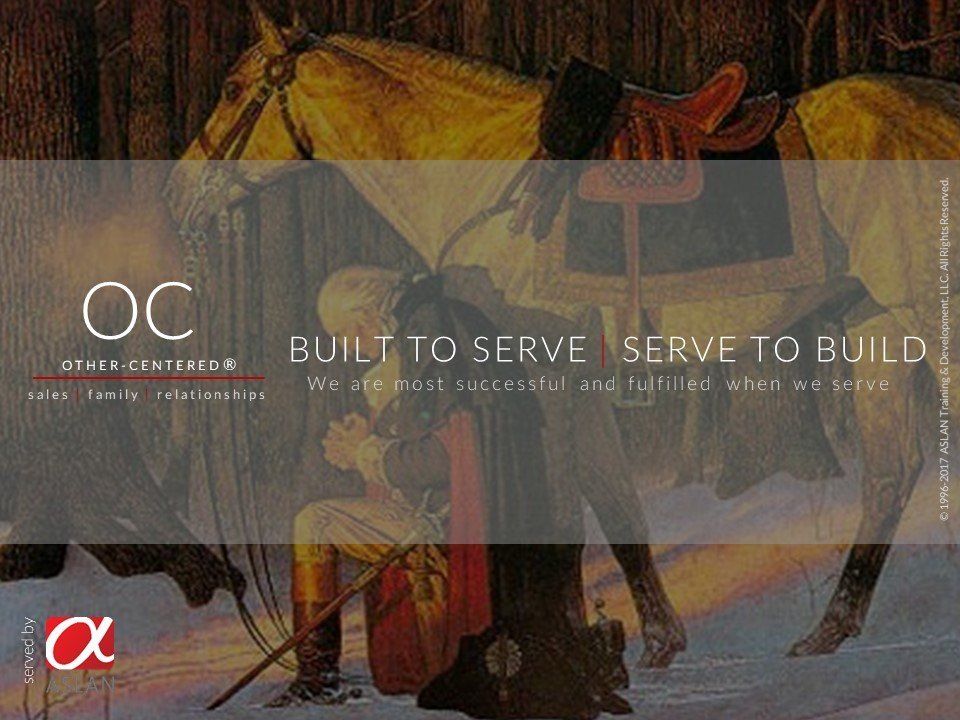
A rider on horseback, many years ago, came upon a squad of soldiers who were trying to move a heavy piece of timber. A corporal stood by, giving lordly orders to "heave." But the piece of timber was a trifle too heavy for the squad.
"Why don't you help them?" asked the quiet man on the horse, addressing the important corporal.
"Me? Why, I'm a corporal sir!" Dismounting, the stranger carefully took his place with the soldiers.
"Now, all together boys - heave!" he said. And the big piece of timber slid into place. The stranger mounted his horse and addressed the corporal.
"The next time you have a piece of timber for your men to handle, corporal, send for the commander-in-chief."
The horseman was George Washington, the first American president.
Whenever someone mentions your name does the word "servant" come to their mind? Jesus modeled servant-hood to twelve young men and changed the world. If you want to see others become servants you must model it yourself. George Washington was a great example of a Christian leader who was a great soldier and servant to those he led. No wonder God used this great servant to establish a new nation.
Moses was also a great leader of men. The Bible says that Moses was the most humble man on earth. That is why God could use him to lead hundreds of thousands out of slavery into the Promised Land.
Pray that God makes you a great humble servant leader of others.
*This article was originally shared by Os Hillman on Market Place Leaders and can be seen here
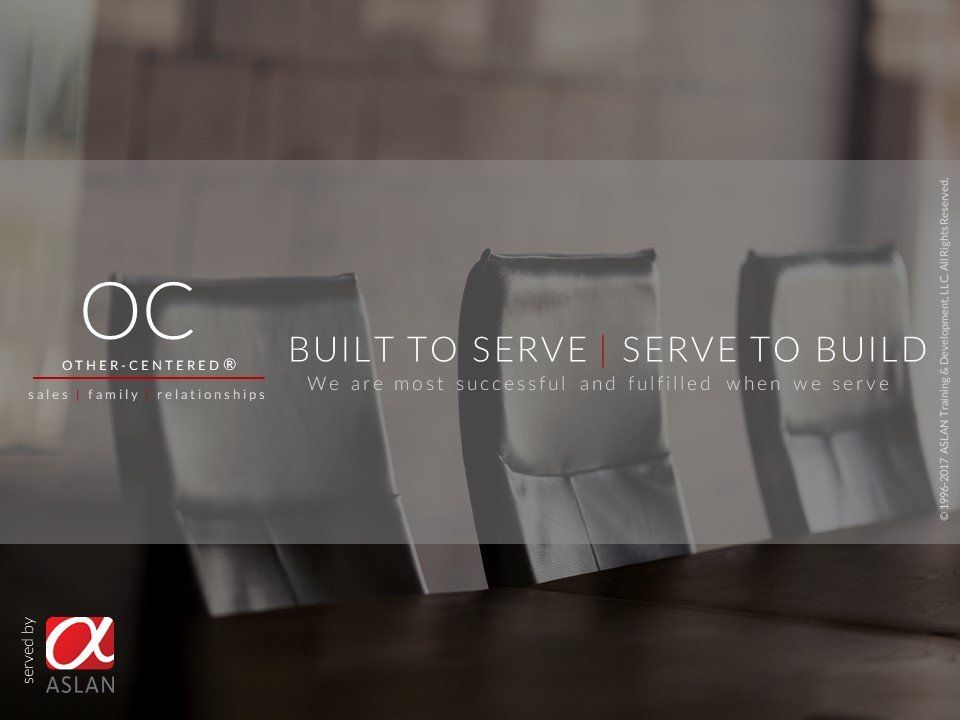
Think about your most difficult presentation, your toughest audience, or the time where you had little to no shot at changing the minds of the decision-making team. Despite the odds, you showed up anyway. Got it? You remember the day? I promise you it doesn’t come close to the audience Erin Gruwell faced in the early fall of 1994.
In your scenario, the decision-making team probably didn’t vehemently hate you or want you dead. That’s literally the receptivity of the audience Erin faced in her first teaching job at Woodrow Wilson High School, a tough Los Angeles, area school district. Her assignment: teach English to the worst performing students of the sophomore class.
How would you reach these kids? How would you get them interested in literature or English composition? What would be the first few slides of your PowerPoint presentation?
They didn’t care about an education. They cared about staying alive. As one of her students put it, “I never thought I would graduate. If I got to do a book report and I have to worry about being shot. Like the book report is going to be at the bottom of my priority list.”
She intuitively knew if she was going to reach them, she had to learn more about her students. But how? Relationally, there was a huge chasm. She was a self-described perky, upper-middle class woman who wore polka dots. They were tough street kids who watched their friends die weekly.
While our role in sales is clearly different from Erin’s, there is one common challenge: How do you change strongly held beliefs? Not take orders or manage relationships, but change beliefs. Erin had to change her students’ beliefs about the best path to reach their desired destination, a path they viewed with the utmost skepticism. Sound familiar?
She pulled it off. She was so successful her story became a movie, The Freedom Writers , with starring Hillary Swank playing Erin . She revolutionized the way they viewed an education, and 100 percent of her 150 students graduated high school.
I think she has something to teach us as well.
The first of Erin’s many brilliant ideas was to push her agenda aside. Instead of diving into diagraming sentences or the merits of iambic pentameter, she made one simple, Other-Centered® request: journal your thoughts for two weeks. Since the journals were turned in anonymously, she got the real story for the first time. Her students became people. She got a glimpse into the way they saw the world, what their life was really like, and the incredible challenges they faced every day. She discovered their point of view.
You may not have the opportunity to meet everyone you are presenting to, or spend hours in Discovery learning about the plans, pains, and key decision drivers. Regardless of what is known about your audience, we can control where we begin. We can lead with our story or do our best to lead with their story. I believe Erin, like all the other teachers before her, would have failed to influence her students if she hadn’t begun with their story. So simple, but in my experience, so overlooked.
Her students, like your customers, have an existing frame for how they see the world. Everything they’ve experienced in life determines how they see the topic at hand. And if you desire to reframe a strongly held belief system, you must start with their existing frame.
So, do everything you can to get your hands on their “journal.” Become a student of your customers. Like the marketing guru who understands the psychology of their unique customer segments, you can do the same for the typical players in the decision-making process. Company types, role types, industries, they all share commonalities, and the more you read, observe and listen, the more accurately you can predict their point of view.
Whether the information is gained in prior meetings with the decision makers, interviewing similar, existing customers, or from those who know your audience members; make it your goal to begin your presentation by blowing their minds with how well you know them. If you can get a few heads nodding, some knowing smirks (How did she know that?), and some “Amen sister, preach it!” the likelihood of your influence grows exponentially.
If you miss the mark, here’s what I’ve learned from 20 years of making presentations : If you make a sincere effort to start with and describe their point of view and miss a few details, your stock with the audience improves. They would rather help you struggle to understand them than be bored by you.
Making your audience members the lead story is always better than the, “I don’t know anything about you, pull string, and deliver generic pitch” presentation.
The gravitational pull to your world, your agenda, and your passion for “English” is a barrier to your success. The audience most likely has a completely different viewpoint from yours. They go to their company meetings, and you go to yours. Don’t ask them to learn your point of view; show that you made the effort to learn theirs. If you do, the next time you take the stage, your message will be received loud and clear.

A few weeks ago while honoring my dad on Father’s day, I was reminded of a truth – a basic principle that is so counter intuitive I need more than a post-it note to jog my memory. I need a huge flip chart positioned strategically in my bedroom.
He was surrounded by a wife, three children, eight grandchildren, and six great-grandchildren, all who love and adore him. His life was full and filled with purpose. He was happy. He was loved.
As I watched the scene unfold, it hit me. It was all worth it: the sacrifices he made, the decision to put us first, to make the calls, to spend the money, and to invest the time. It came back to him in spades. I’m getting emotional as I write these words, thinking about how much I love this man.
I’m not emotional because he deserved my respect for what he accomplished in this world – he does. I’m not emotional because he has so many talents and was loved by not only his friends, but mine as well – he was. My emotions and adoration come from what he did for me and the other 18 people at his house on Father’s day. He simply served us.
It was a great reminder that it truly is in our best interest to serve – whether personally or professionally. If we put the needs of our clients or team members first, we will one day soon be surrounded by people who are committed and loyal to us. And the longer we serve, the bigger the crowd gets.
We are all faced with the pressure of hitting our numbers. Every meeting we walk in, every call we make or email we send, we feel the pressure to produce immediate results. And whether we consciously make the decision or not, someone is first. And if we don’t stop long enough to remember that, in the long run, it’s always in our best interest to put others first, we will one day get to the end of our lives and wonder where everyone is? Where are the clients I did life with, who followed me wherever I went, and called me when a competitor walked in the door? Where are the people I worked with all those years? Why am I still working so hard to open new doors and relationships?
My father is a great reminder that the investment we make in others WILL one day reap the sweetest rewards.
Papa, I love you. Thanks for teaching me the power of putting others first.
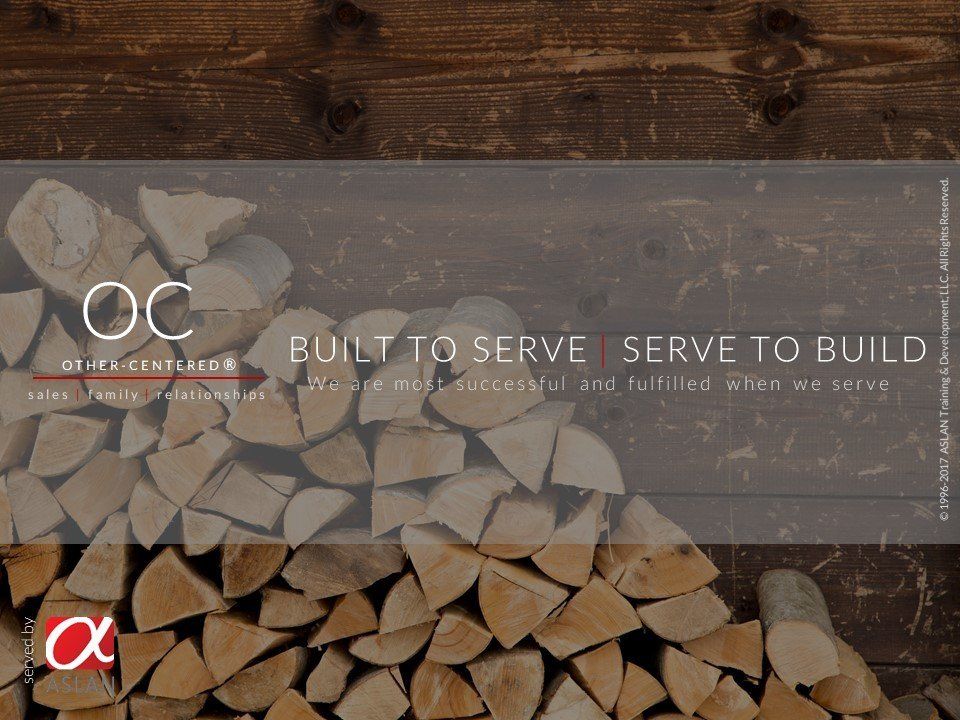
Candidly, I think it’s normal. I think we were created with the instincts to take care of ourselves but what struck me in a conversation I had last night with one of my business partners is that I typically land on the wrong answer.
We were talking about a nonprofit organization his sixteen-year-old son recently launched to support wounded veterans called Wood for Warriors (the proceeds from selling firewood go toward helping wounded veterans buy wheelchairs, etc.) He beamed as he explained how he and his son spent the last several months raising money, traveling to the Walter Reed Hospital in Maryland to visit a Ranger who a lost a leg and arm in Afghanistan, and spending countless hours finding and cutting firewood. He summed it up with this statement, as if he was surprised by what he was about to say: “I never felt more alive or fulfilled than I did chopping wood with my boys.”
Not to disagree with that wise sage Ricky Bobby who once said, “If you’re not first, you’re last,” but while this may be true in racing I don’t think it’s the way we were created to live.
If I was really honest, what I want is contentment – a deeper sense of fulfillment.
And I don’t get that by chasing after my selfish appetites. I find that by serving. And I can promise you it doesn’t always feel true, but it’s a principle: we ARE most fulfilled when we serve. If you need a case study, examine the lives of people who have unlimited resources to feed their self-centered appetites.
Hear me out – I’m not judging. I often think that if I had unlimited resources, I would end up in the same place as ____ (name your favorite celebrity tragedy – living or dead). My point is not to highlight the flaws of the rich and famous, but simply that if you want to know where the trail leads, it’s not difficult to figure out that self gratification is not the answer. It’s also inspiring to see what some of the members of this very elite club have accomplished and to hear the positive things they say about their lives once they landed on this principle (check out Eric Clapton or Bono).
So how does this principle apply to us in sales?
Here it is: You will be most fulfilled and content if you focus on helping the customer solve THEIR problems vs. focusing on YOUR commission (or what your commissions can buy). I’m not saying you shouldn’t care about commissions – it’s about focus. Where’s your priority? If you dedicate yourself to serving others not only will you get what you really want, but I also firmly believe that you will be one of the most successful sales reps in your organization. More doors will open up. You’ll encounter a deeper level of disclosure about customer’s hidden needs. Customers will be more loyal. Referrals will increase. Your presentations will have a much greater impact because you get out of the way. You’ll shift from trying to win the deal or make the perfect presentation to ensuring the customer makes the best decision.
Can you be successful if you just focus on achievement? Absolutely. But you won’t get what you really want. And I would argue that success is always diminished if your number one focus is you.
Should you serve everyone?
No. It’s impossible. We have to be strategic in whom we choose to serve.
“Tom are you saying I should ignore my own needs?” Nope. You can’t give what you don’t have. I’m not saying we should spend every waking minute serving others. I’m speaking about purpose. Its realizing why were put on this planet – to serve ourselves or to serve others? And I believe our creator wired us to embrace the latter. And when we ignore this truth it always leaves us wanting because we are going against the grain of who we really are and what we were created to do. Just like a true accountant will never be fully alive in a sales role, you and I will never truly be satisfied unless we embrace our role to serve.
I think the veterans figured this out a long time ago. They are very clear about their role and purpose. They were forced to choose whom they would serve the day they signed up for duty… and I can’t imagine where we would all be if they hadn’t dedicated ALL they had to serve us and our country.
